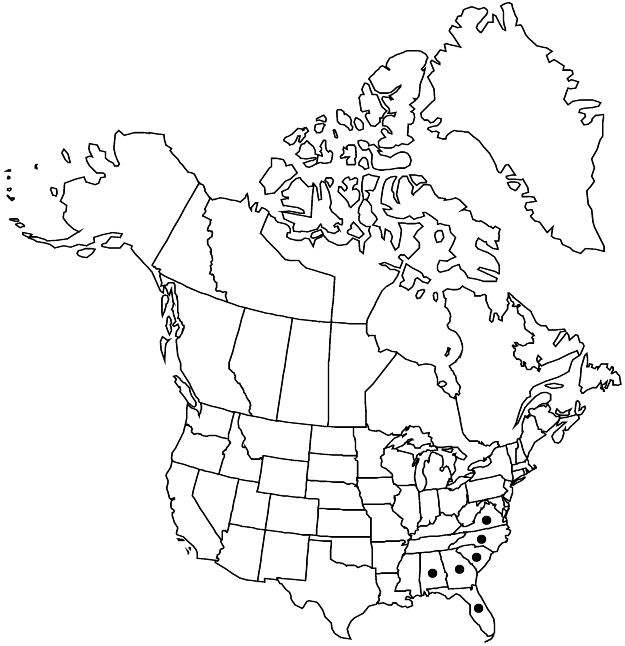Difference between revisions of "Crataegus lanata"
Biltmore Bot. Stud. 1: 86. 1902.
FNA>Volume Importer |
imported>Volume Importer |
||
| (One intermediate revision by the same user not shown) | |||
| Line 60: | Line 60: | ||
|publication year=1902 | |publication year=1902 | ||
|special status=Endemic | |special status=Endemic | ||
| − | |source xml=https:// | + | |source xml=https://bitbucket.org/aafc-mbb/fna-data-curation/src/2e0870ddd59836b60bcf96646a41e87ea5a5943a/coarse_grained_fna_xml/V9/V9_1080.xml |
|subfamily=Rosaceae subfam. Amygdaloideae | |subfamily=Rosaceae subfam. Amygdaloideae | ||
|tribe=Rosaceae tribe Gillenieae | |tribe=Rosaceae tribe Gillenieae | ||
Latest revision as of 22:53, 5 November 2020
Shrubs, widely spreading mature, 40–60 dm, branches ± weeping. Stems: twigs: new growth densely appressed-white-pubescent, 1-year old brown to purple-brown, glabrous; thorns on twigs absent or numerous, straight, 1-year old purple-brown, slender, 1–4 cm. Leaves: petiole length 20–25% blade, pubescent young, densely glandular; blade usually narrowly to broadly obtrullate, sometimes ± obovate, 3–5 cm, thick, floppy, base usually gradually tapered, lobes 1 or 2(or 3) per side, subterminal, short, well defined, margins subentire or obscurely glandular crenate-serrate, veins 2 or 3 per side (exiting beyond widest part of leaf), apex acute to subacute, surfaces pubescent. Inflorescences 1–4-flowered; branches densely white-canescent; bracteoles deciduous, linear, margins sessile-glandular, adaxially short-pubescent. Flowers 17–20 mm diam.; hypanthium densely canescent; sepals narrowly triangular, 5 mm, margins glandular-serrate, abaxially pubescent; anthers ivory; styles 4 or 5. Pomes usually orange or ruddy to crimson, suborbicular to ± pyriform, 9 mm diam., pubescent; sepals reflexed; pyrenes 4 or 5.
Phenology: Flowering Mar–Apr; fruiting Jul–Aug.
Habitat: Pine barrens, open scrub, on sand
Elevation: 0–200 m
Distribution

Ala., Fla., Ga., N.C., S.C., Va.
Discussion
Crataegus lanata occurs from Alabama and northern Florida to the Carolinas; there is one record from Chesterfield County, Virginia.
Crataegus lanata is one of the most abundant species in ser. Lacrimatae; it is most like C. lassa and is noted for its very large (for ser. Lacrimatae), usually floppy, distinctly but shallowly incised, kite-shaped leaves, persistently somewhat white-hairy. The fruit of C. lanata ripens copper to red.
Variants of Crataegus lanata include some intermediates with the typical form of C. lassa and forms with wider, more obovate leaves, some of which may be the same as C. amica Beadle. Crataegus pulla Beadle, described from sandy flats along the Tombigbee River, Mississippi, is a form little-known apart from its type and protologue. Crataegus pulla has similarities to C. lanata, but differs by its more or less coarsely and rather irregularly toothed, obovate leaves often with a single, relatively small, somewhat obscure lobe on each side; the leaves are at first more or less tomentose and then variably somewhat glabrescent; flowers are smaller (14–17 mm wide); and fruits are larger (9–12 mm wide).
Selected References
None.